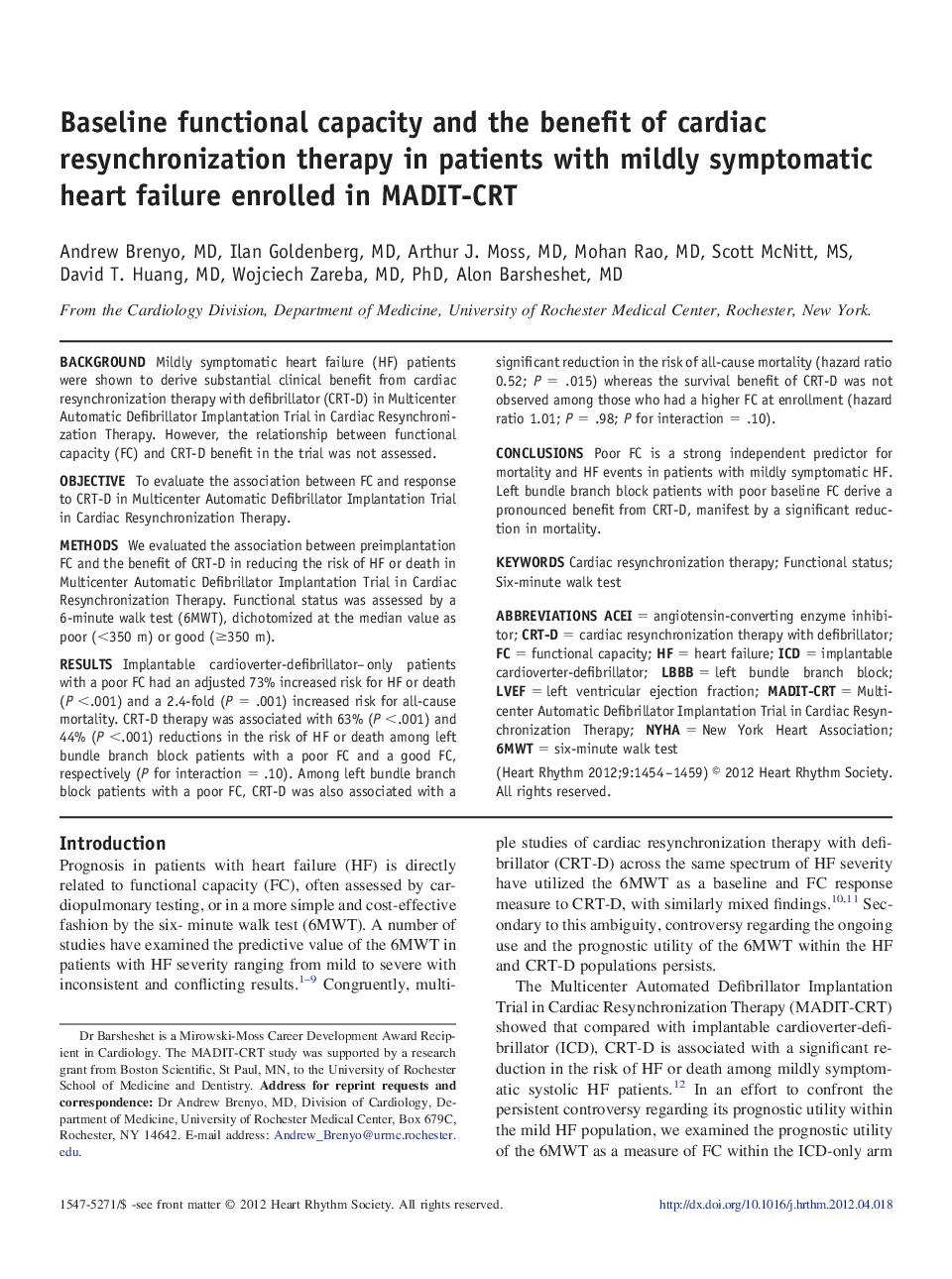| کد مقاله | کد نشریه | سال انتشار | مقاله انگلیسی | نسخه تمام متن |
|---|---|---|---|---|
| 2922516 | 1175848 | 2012 | 6 صفحه PDF | دانلود رایگان |

BackgroundMildly symptomatic heart failure (HF) patients were shown to derive substantial clinical benefit from cardiac resynchronization therapy with defibrillator (CRT-D) in Multicenter Automatic Defibrillator Implantation Trial in Cardiac Resynchronization Therapy. However, the relationship between functional capacity (FC) and CRT-D benefit in the trial was not assessed.ObjectiveTo evaluate the association between FC and response to CRT-D in Multicenter Automatic Defibrillator Implantation Trial in Cardiac Resynchronization Therapy.MethodsWe evaluated the association between preimplantation FC and the benefit of CRT-D in reducing the risk of HF or death in Multicenter Automatic Defibrillator Implantation Trial in Cardiac Resynchronization Therapy. Functional status was assessed by a 6-minute walk test (6MWT), dichotomized at the median value as poor (<350 m) or good (≥350 m).ResultsImplantable cardioverter-defibrillator–only patients with a poor FC had an adjusted 73% increased risk for HF or death (P <.001) and a 2.4-fold (P = .001) increased risk for all-cause mortality. CRT-D therapy was associated with 63% (P <.001) and 44% (P <.001) reductions in the risk of HF or death among left bundle branch block patients with a poor FC and a good FC, respectively (P for interaction = .10). Among left bundle branch block patients with a poor FC, CRT-D was also associated with a significant reduction in the risk of all-cause mortality (hazard ratio 0.52; P = .015) whereas the survival benefit of CRT-D was not observed among those who had a higher FC at enrollment (hazard ratio 1.01; P = .98; P for interaction = .10).ConclusionsPoor FC is a strong independent predictor for mortality and HF events in patients with mildly symptomatic HF. Left bundle branch block patients with poor baseline FC derive a pronounced benefit from CRT-D, manifest by a significant reduction in mortality.
Journal: Heart Rhythm - Volume 9, Issue 9, September 2012, Pages 1454–1459